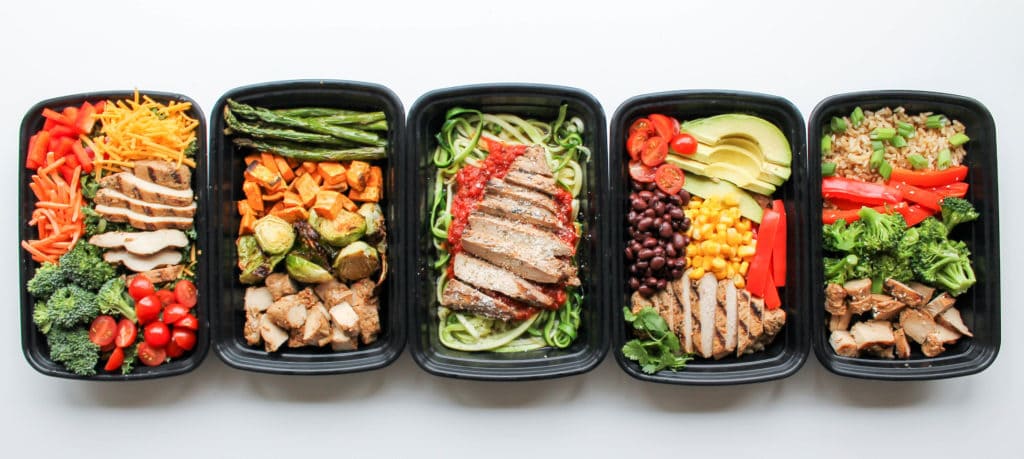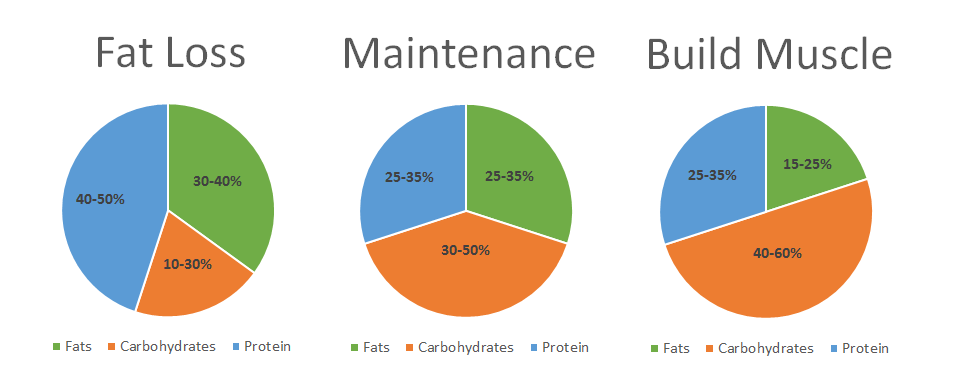
It’s that time of the year again and people are striving towards their fitness goals with newly found motivation. Let’s face it, most goals are never met because an individual does not have a clear and concise plan of action. As many people aspire to change their bodies, whether it be through fat loss or muscle gain, a dietary change is a necessity. Regardless of direction, you absolutely need to be aware of your food intake in order to appropriately assess whether you’re progressing or not. Meal prepping is the simplest and most effective way to provide an “insurance policy” of some sort towards your daily food intake.
There is absolute truth in the saying, “If you fail to plan, then you plan to fail.” If you don’t have meals or snacks ready to go ahead of time, then you will likely make poor food choices due to hunger and convenience! So, here are some of the basics I’d recommend to ensure a successful meal prep!
Step One: Planning Your Calorie Intake
First and foremost, you need to know your daily calorie target. As a simple guide, your maintenance calories should be set to 14-17cals X bodyweight. If you are naturally more of an ectomorph (thin and lean) aim closer to 17 and for endomorphs (larger and higher body fat) closer to 14. For weight/fat loss, create a deficit of 10-25% from your maintenance calories. For weight/muscle gain, create a surplus from your maintenance. Once you have this number in mind, then it’s time to decide how many times a day you want to eat. Meal size and timing do not make a major difference in the way your body composition is going to change. What is most important is that you are staying consistent on your specific intake.
*Let’s say your target is approximately 2,000 calories per day. You could either have, five 400-calorie meals, three 667-calorie meals, or any other calculated variation accordingly*
Step Two: Choosing Your Macronutrient Breakdown
After you have decided upon your daily calorie intake, now it’s time to focus on your macronutrient breakdown. This involves finding appropriate percentages of your proteins, carbohydrates, and fats for the day. Proteins and carbohydrates account for 4 calories/gram, and fats have 9 calories/gram. Each individual’s macro percentages will vary dependent on their goal and how their body is responding towards that specific dietary change. A good reference point for establishing macro percentages are:
Carbohydrates: 45-65% of daily calories
Proteins: 10-35% of daily calories
Fats: 20-35% of daily calories
*If we establish your 2,000 calorie diet to have a macro breakdown of 50% carbohydrates, 25% proteins, and 25% fats, that means you will be aiming for 250g carbs, 125g proteins, and 55.5g fats.
(2,000x.50% = 1000cals/4 = 250g carbs)
(2,000x.25%= 500cals/4 = 125g protein)
(2,000x.25%= 500cals/9= 55.5g fats)
Step Three: Putting It All Together
Now that you have established your daily calorie intake and macronutrient breakdown, you’re ready for the next step. What you need to do is figure out how many meals you would like a day, then calculate the calories/macros accordingly to know exactly how much you need to eat within each meal. It could look like this:
| 2,000 calories and 50:25:25 ratio | |||
| 6 meals/day | 5 meals/day | 4 meals/day | 3 meals/day |
| 333.3 cals/meal | 400 cals/meal | 500 cals/meal | 666 cals/meal |
| 41.6g carbs | 50g carbs | 62.5g carbs | 83g carbs |
| 20.8g protein | 25g protein | 31.3g protein | 41.6g protein |
| 9.3g fats | 11.1g fats | 13.8g fats | 18.5g fats |
*For simplicity, “meals” simply refer to the amount of times you are eating per day. If you prefer having larger traditional meals (breakfast, lunch, dinner) and some snacks throughout the day, try this: Eat 5x/day with three 500cal meals and two 250cal snacks.*
Step Four: Choosing Foods
If you’ve made it this far, you’ve come to the point of meal preparation. You know your daily target calories, macros, and the amount of meals you want to create, so it’s time to get to it! You must now choose which types of food you would like to use in your meal prep towards each macronutrient. As a general rule, pick foods that you already enjoy eating. There’s no sense in picking foods that you dislike, as you are more likely not to stick to it.
Pick your protein:
No matter what source of protein you choose, just understand that there are different levels of fat with each cut or quality of meat. Chicken breast typically has 2g fat per 4oz., whereas chicken thighs have closer to 8g fat per 4oz. so plan appropriately. Another important factor is understanding that raw weight and cooked weight are very different in regards to calories and macro grams. 4oz of raw chicken breast will yield about 26g protein vs. 4oz cooked will yield 35g protein. These two factors will typically throw off a person’s calorie intake severely if they are not accounted for. Make sure to account for specific protein source, type, and weight.
Pick your carbohydrate:
Carbohydrates are plentiful and abundant in our modern society. Choosing healthy sources is the hardest part since we are tempted with sugars and highly processed foods surrounding us. Aim for simple sources of whole foods like fruits, grains, starches, and nutrient-rich vegetables. As with the proteins, carbohydrates must also be measured and tracked according to their raw vs. cooked weight. For example, a cup of dry uncooked rice will yield 140g carbohydrates vs. 53g cooked, which equates to a difference of 348 calories!
Pick your fats:
After you have taken into account the fats accumulated through your protein and carbohydrate sources, anything left should be consumed through healthy foods. Common healthy fats consumed are avocados, nuts, butters, and oils. If you find that you have a hard time consuming fats, then maybe a good option would be for you to consider fat-rich proteins like salmon and dairy. Just remember that even though certain fats produce health benefits, they are also the most calorie dense macronutrient and should monitored.

Step Five: Calculating and Cooking
By now you should know exactly what your macro breakdown per meal is, so it’s time to decide how many meals for the week you would like to prepare. Most people prepare for the weekdays since weekends allow for more time at home to cook or eat foods on your own time. Think about what meals of the day you are needing the most help with. For most, that comes down to lunch or dinner. For example, let’s say you need 2 prepared meals for the 5 weekdays. Now you know you need 10 meals total, but what does that mean you should buy or cook? Go back to Step Three, and recall your macro breakdown per meal. From there, establish what foods you are going to use for those given nutrient amounts like so:
| Based on 5 total meals/day of 400 cals/meal | |||
| Macro Breakdown per meal | Weight equivalent per source of food | Multiply by 10 meals needed | How much to buy |
| 50g carbs | = ½ cup dry rice
(1 cup cooked) |
10 x .5 | 5 cups of dry rice |
| 25g protein | = 4oz raw chicken breast
(3oz cooked) |
10 x 4 | 40oz/16=
2.5lbs chicken |
| 11.1g fats | = ½ medium avocado
Or ¾ oz almonds |
10x .5 or
10 x .75 |
5 avocados or 7.5oz almonds |
* To find nutritional info, look up what you’d like to eat first, then find the weight correlating closest to your target grams for each nutrient*

Consistency is certainly one of the most challenging aspects of a diet for many, but key for long-term success. One good day of dieting isn’t going to make you, just like one bad day of eating isn’t going to break you. Rather, it is the accumulation of good—or bad—habits practiced day in and day out that will determine your outcome. Start to build good habits by logging your food intake as soon as possible. Doing this will allow yourself to be up-to-date on your nutrition and ensure you’re not mindlessly overeating throughout the day.
In order to see if your plan is working, you must control the nutrition variable and build this consistency. That way, you can better understand how your body responds to a certain macro intake and what adjustments would be necessary to make.
Meal prepping will take some time to get used to, but as with all things, you get better and more efficient with practice. Once you know your daily targets, you can plan accordingly to best suit your needs. After you know how much to calculate and purchase, all that’s left to do is cook, divide, and eat!




POST REPLY